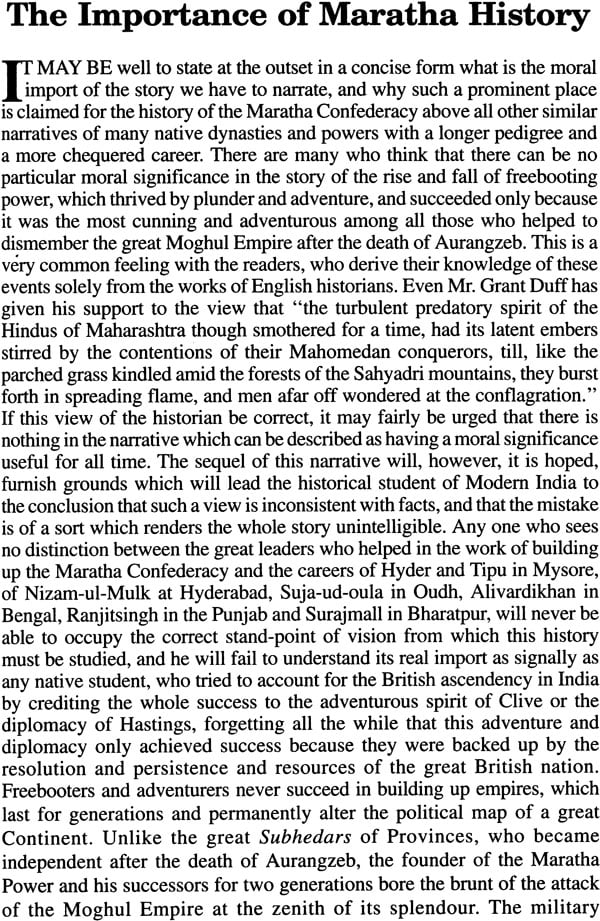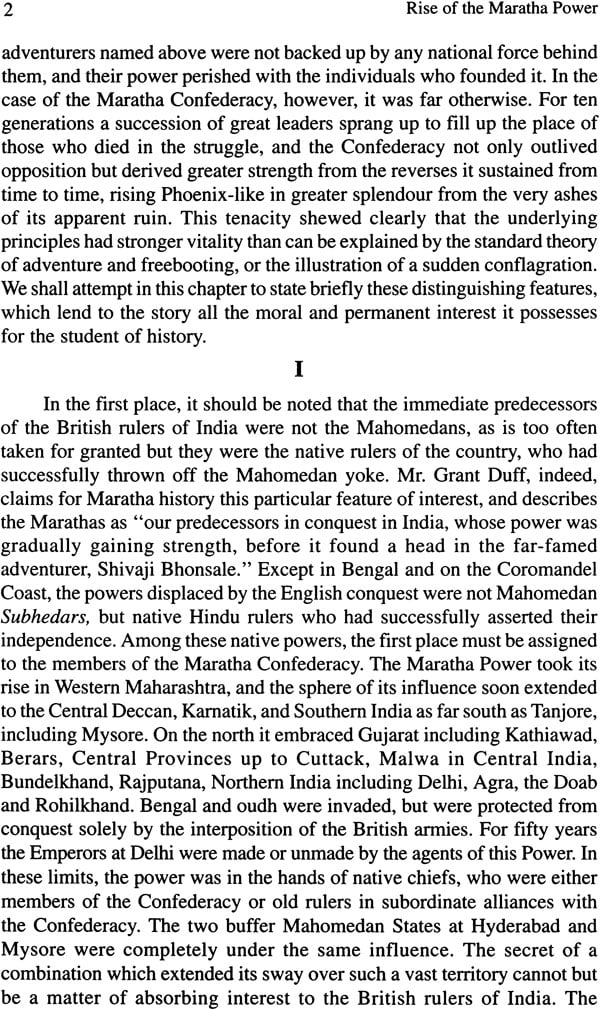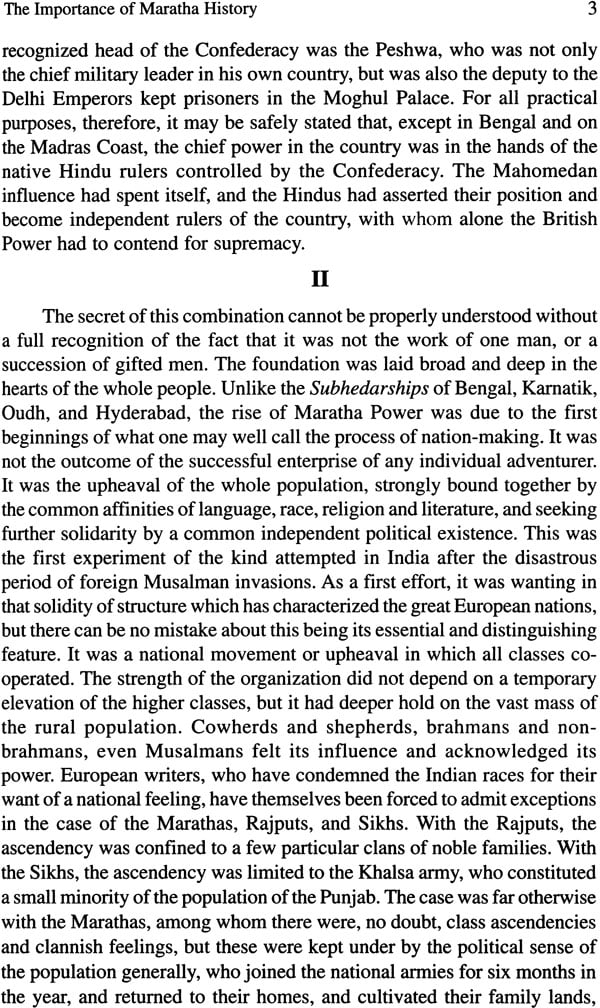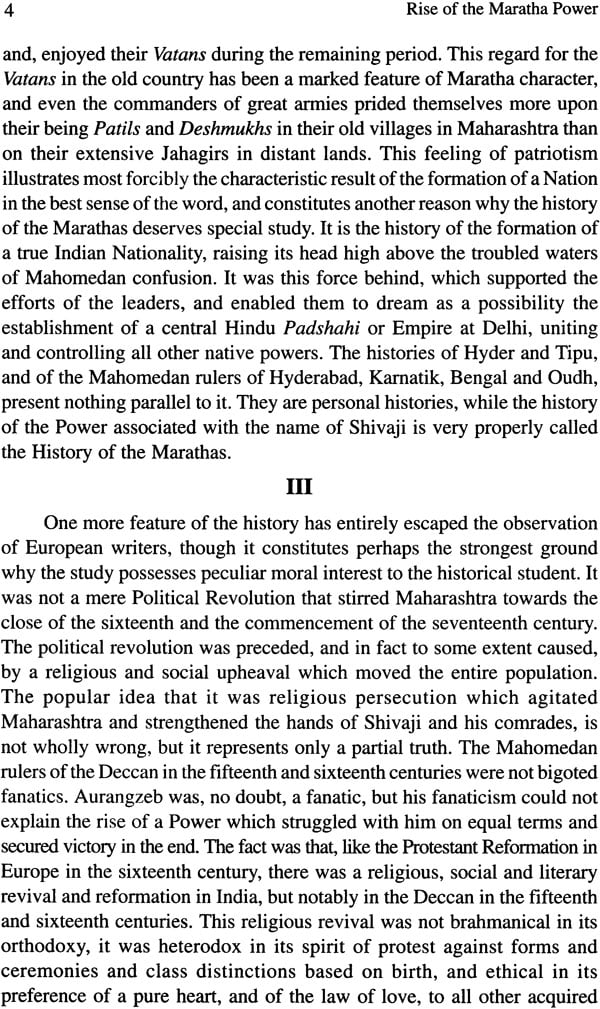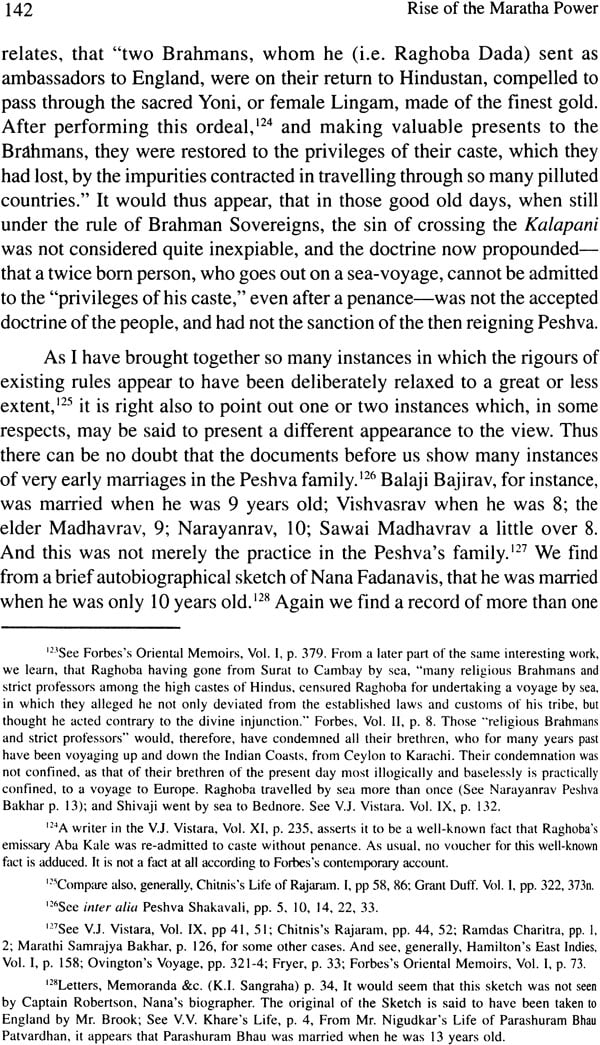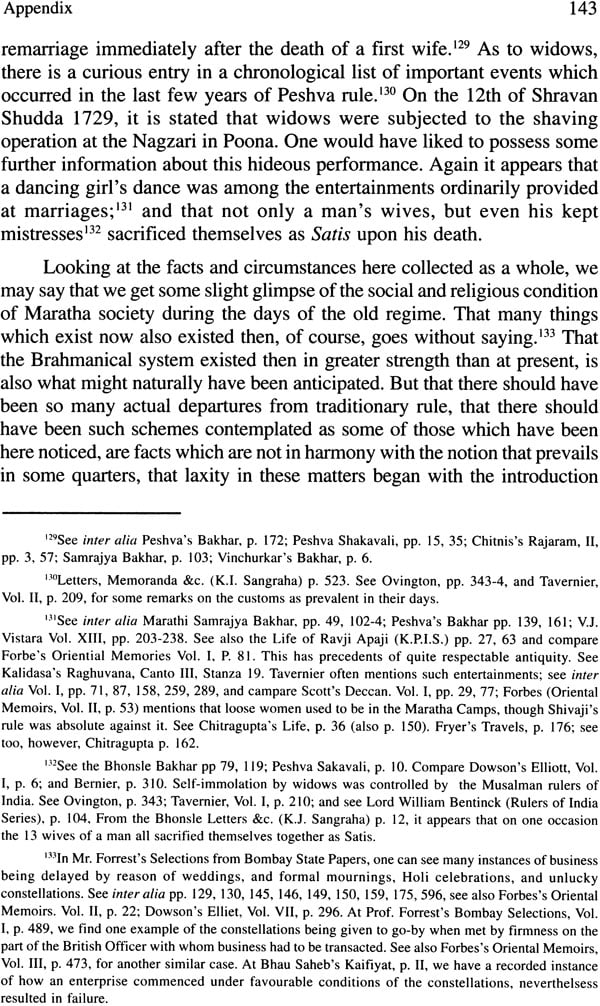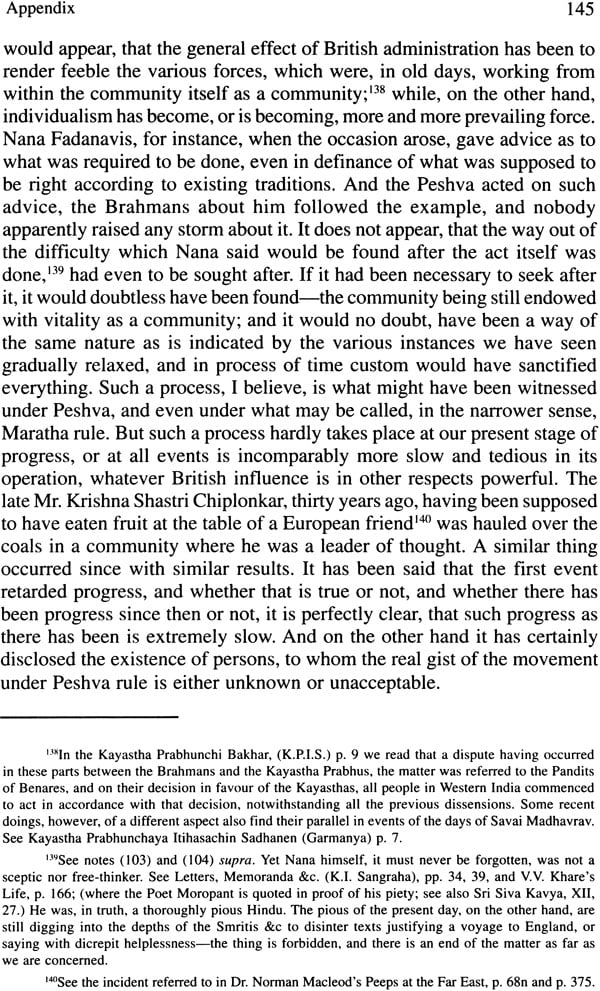
Rise of The Maratha Power
Book Specification
| Item Code: | NAD377 |
| Author: | Mahadeo Govind Ranade |
| Publisher: | Publications Division, Government of India |
| Edition: | 2021 |
| ISBN: | 9788123017730 |
| Pages: | 159 |
| Cover: | Paperback |
| Other Details | 9.5 inch X 6.5 inch |
| Weight | 250 gm |
Book Description
About The Book
Justice Ranade was a pioneer in many fields. His championship of social reform and his studies in history and political economy were aspects of his many-sided talent. History of Marathas interested this nation-builder mainly because their rise exemplified “first beginnings of what one may well call the process of nation-making.
The book is a gem of its kind; it summarizes the vivid outline of the rise of the Maratha power in a brilliant fashion. The book has wielded such an influence on later study of Maratha history as well as on the approach to the understanding of the history of India as a whole that it is rightly considered a classic.
The present volume is a faithful reproduction of the first edition of the work, published a few months before the author’s death in 1901.
JUSTICE RANADE was a pioneer in many fields. His immense intellect took upon itself the task of exploring the sources and underlying principles of national power. His championship of social reform and his studies in history and political economy were aspects of his many-sided talent. The history of the Marathas interested this nation-builder mainly because their rise exemplified “the first beginnings of what one may well call the process of nation-making.”
He had intended the work to be presented in two parts. The first volume was published in 1900. The manuscript notes of the second part were also nearly ready when new documents were made available to the public by the Government, necessitating scholarly scrutiny. But before he could do this, death supervened.
The book is a gem of its kind though Justice Ranade has modestly referred to this volume as “these stray chapters.” Its wide sweep and remarkable grasp of the salient points of Maratha history show a vision and a command which indicate that he would have been a great historian if he had not taken up work in other fields. No other book has summarized in such a small compass the vivid outline of the rise of the Maratha power in so brilliant a fashion. It is a model for historians and students. The book has wielded such an influence on later study of Maratha history as well as on the approach to the understanding of the history of India as a whole that it is rightly considered a classic. It is being published in the series Classics of Indian History and Economics as it has become rare. The present volume is a faithful reproduction of the first edition of the work, published a few months before the author’s death in 1901.
IT WAS IN the first quarter of the seventeenth century that two apparently insignificant events occurred on the Western Coast of India— the establishment of an English Factory at Surat in 1612, and the birth in 1627 at Shivner, near Junnar, of a son to a petty Maratha Jahangirdar of the Ahmednagar Nizam Shahi kingdom. Though neither of these events attracted much notice at the time, they heralded the birth of two mighty powers, which were brought into strange contact with one another during the next two centuries, now as allies, and again as foes, they competed for supremacy in India, till at last the more organized foreign power prevailed in the struggle, and displaced the disorganized native power from its position as supreme ruler. The object of the following narrative is to present to the English and Indian reader a bird’s eye view of the history of the rise and progress of the latter power—the power of the Maratha Confederacy, which, for one hundred years at least, occupied the foremost place among the native rulers of the country, and whose orders were obeyed at one and the same time far off in the west at Dwarka, in the east at Jagannath, at Haridwar in the north, and Rameshwar in the south of the Indian Continent. It is not intended to go over the beaten tracks of the detailed story, which has been so elaborately treated in our native Bakhars, and authoritatively described by Mr. Grant Duff, the historian of the Marathas. Materials for a fuller account of the detailed narrative are being made available by the labours of our native scholars, and they will have in time to be worked up systematically, but the limits assigned to these stray chapters on Maratha History would of themselves preclude any such ambition. My aim is rather to present a clear view of the salient features of the history from the Indian standpoint, to remove many misapprehensions which detract much from the moral interest and the political lessons of the story, and, above all, to enlist the sympathy of the representatives of the conquering British power in the fortunes of its worsted rival. Now that all jealousies are laid at rest, the tribute of justice may well be paid to the departed great, whose names are cherished by millions in India as the sweet memories of an irrevocable past.
The writer of these chapters claims no other merit for his work. He would not have undertaken the responsibility connected with it but for the fact that it has been handed over to him as legacy by a revered friend, since deceased, who had, jointly with him, undertaken the work from a feeling of true patriotism, and who would, if he had been spared, have worthily completed, what he no doubt intended to be, magnum opus of his brilliant career.
The twelve chapters which are now published relate to the rise of the Maratha Power. The second volume will treat about the progress of the Confederacy. The manuscript notes are nearly ready; but as, since these notes were first written, the Government of Bombay has made available to the public the records in the Poona Dafter, it has been deemed advisable to delay the publication of these succeeding chapters for the present. When such fresh materials have been made available, it would not be proper to write on this part of the subject without a careful study of these hitherto- neglected sources of information. At the desire of appreciative friends, a contribution from the pen of the late Mr. Justice Telang is added at the end as a fitting conclusion to this volume. Mr. Telang’s paper, “Gleanings from the Maratha Chronicles,” represents the true spirit in which native historians should treat the past history of their country. As this work presupposes a general acquaintance with the facts of Maratha History, and only seeks to suggest and enforce its lessons, it has not been deemed necessary to overload the book by references to English and native authorities. The lessons it seeks to illustrate are (1) that the rise of the Maratha Power was not a mere accident due to any chance combination, but was a genuine effort on the part of a Hindu nationality, not merely to assert its independence, but to achieve what had not been attempted before—the formation of a Confederacy of States animated by a common patriotism, and (2) that the success it achieved was due to a general upheaval—social, religious, and political-of all classes of the population. The attempt failed; but even the failure was itself an education in the highest virtues, and possibly intended to be a preparatory discipline to cement the union of the Indian races under British guidance.
| Introducing the Book | V |
| Preface by the Author | VII |
| The Importance of Maratha History | 1 |
| How the Ground was Prepared | 8 |
| How the Seed was Sown | 18 |
| How the Seed Thrived | 27 |
| The Tree Blossoms | 38 |
| The Tree Bears Fruit | 46 |
| Shivaji as a Civil Ruler | 52 |
| The Saints and Prophets of Maharashtra | 64 |
| Gingi | 77 |
| How Order was Brought out of Chaos | 87 |
| Chowth and Sardeshmukhi | 97 |
| Marathas in Southern India | 106 |
| Appendix—Gleanings from Maratha Chronicles | 117 |
| Index | 147 |
